Exhibition shows how humans are transforming the planet
Can logging be beautiful? Seen from above, it creates the most delicate patterns, but the story behind it is scary – large parts of the rain forest are disappearing every day.
Using selected photos from Google Earth, an exhibition, Mind the Earth, at the Danish Architecture Centre in Copenhagen, Denmark, shows the Earth’s transformation, providing insights into the diversity, resilience and vulnerabilities of the planet.
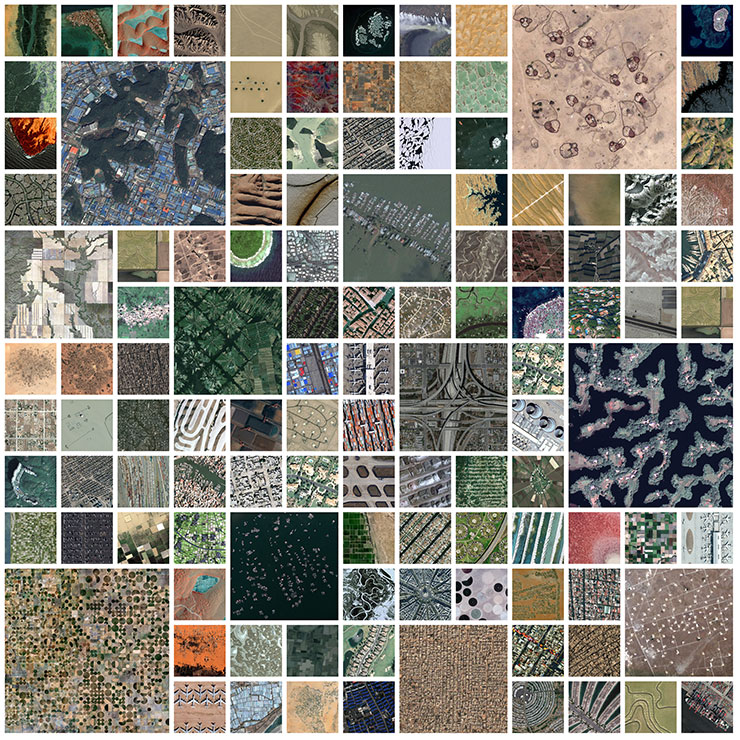
[Mind the earth collage of Google Earth photos]
The exhibition, Mind the Earth, which opens on 20 November at the Danish Architecture Centre, zooms both in and out, as each of the selected photos from Google Earth tells its own story about the state of the Earth: from scattered island communities to megacities and huge agricultural areas, which have to provide food for an ever growing population.
The exhibition deal with four main themes, all focused on living and inhabiting: food, energy, transport and water. Through those themes the exhibition will examine what the future looks like for people, cities and landscapes: what are we going to live on? How will we get from A to B? And where will our resources come from?
In the exhibition, visitors enter a dark room with photos, which light up on the floor. The evolution over the course of time will be emphasised by displaying the same subject at different moments. Each photo is be accompanied by surprising facts and thought-provoking philosophy.
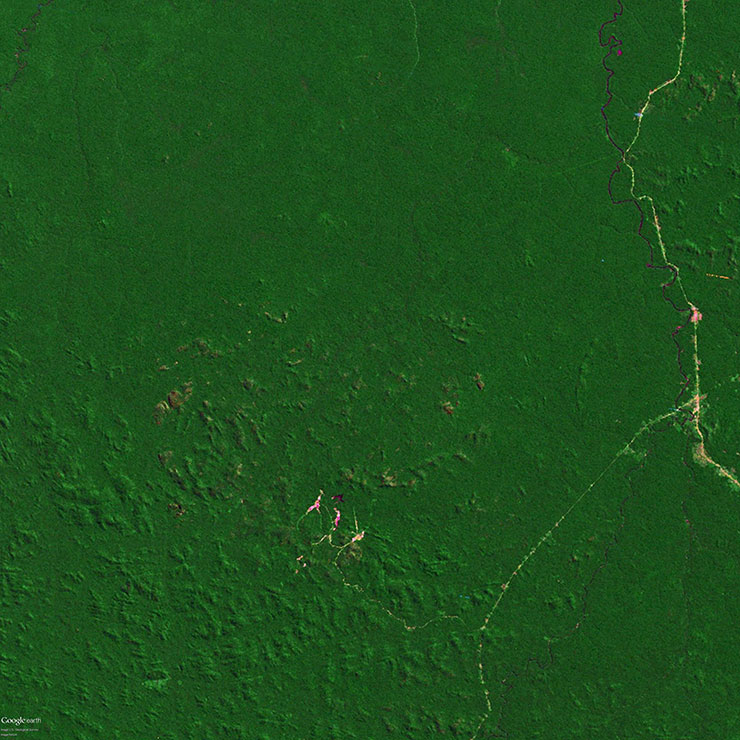
Above: The Amazon Rainforest in 1975 and below in 2008
The exhibition is the result of a close collaboration between the architect/urban planner, Kasper Brejnholt Bak from Rambøll and the writer, Morten Søndergaard, each of whom has his own personal approach to the photos: on one hand, the architect's descriptive, factual point of view; on the other, the writer's poetic, philosophical one. Together they will create sympathetic insight into the universe of the images, suggesting what our world looks like at the moment, and what it might end up looking like in the future.
For some time now, Google Earth has proved its worth as a new democratic tool for viewing, and learning about our planet. But the really interesting question is: can a technological resource such as Google Earth provide us with new insights about the world we live in and maybe even help us change it? The exhibition tackles this question with its combination of texts and selected photos from Google Earth.
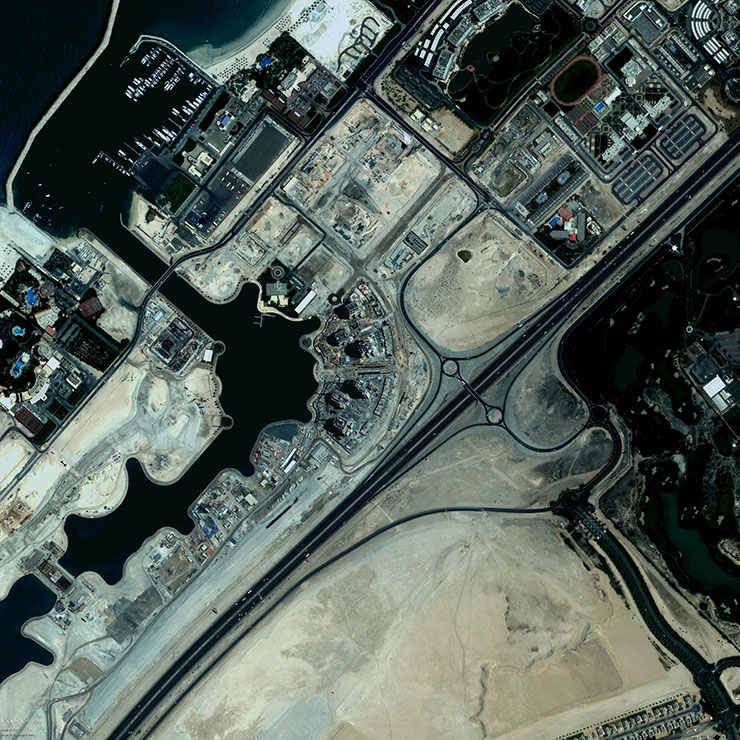
Above: Dubai in 2008 and below, Dubai in 2014
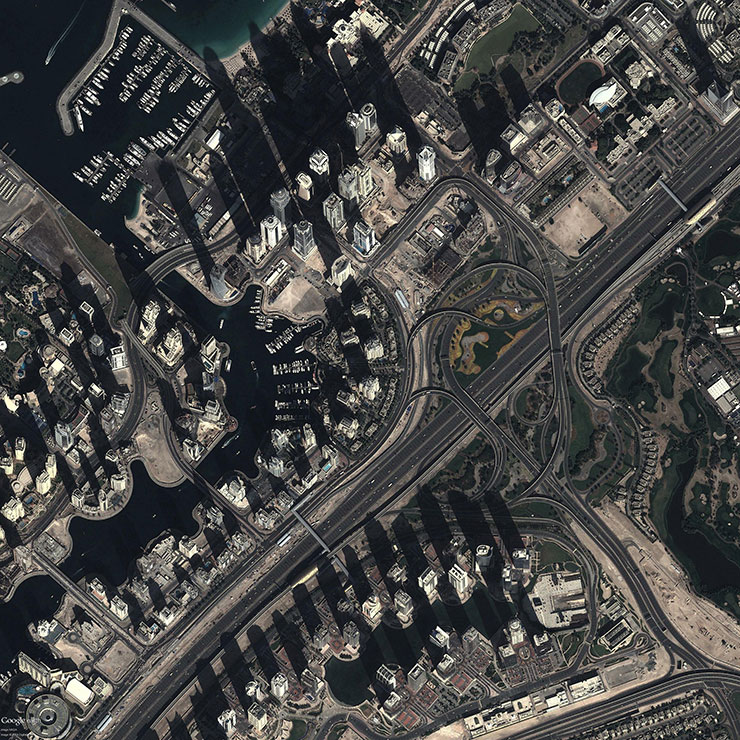
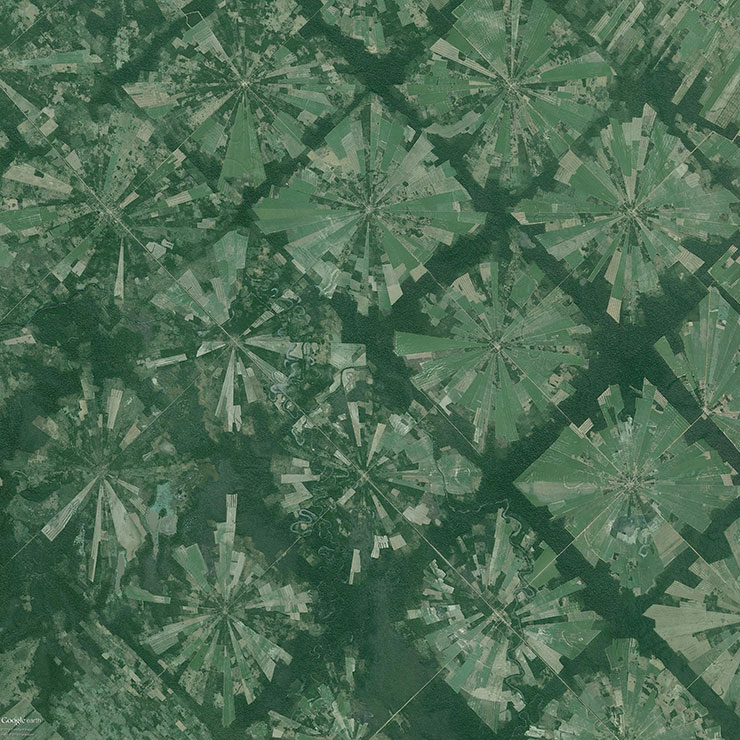
Rainforest deforestation in Bolivia
The exhibition is on show from November 20 to January 11, 2015, at the Danish Architecture Centre, Kopenhagen, Denmark